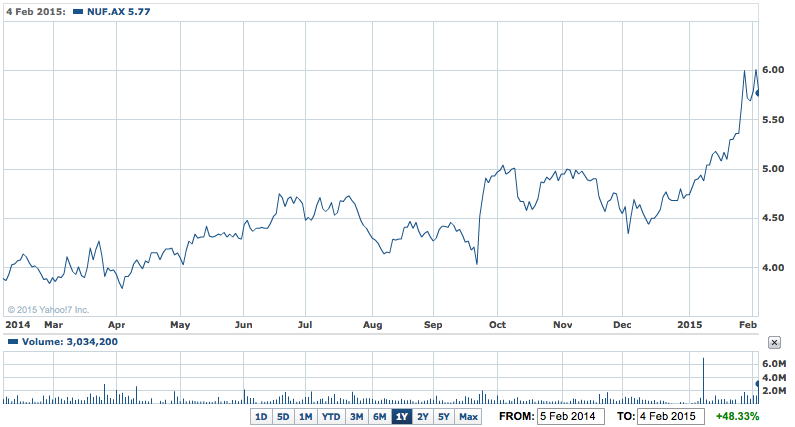So why did Nufarm (NUF) need a trading suspension to allow it to handle the reporting of the depature of long time CEO Doug Rathbone?
Mr Rathbone’s decision to leave the company ends 15 years in the role and 41 years working for Nufarm, which sells crop protection and seed products to farmers around the world.
And it also leaves a strong hint of an argument between board and CEO about new cost cutting efforts that has been resolved by Mr Rathbone quitting.
“Doug and the board have agreed that now is the right time to make a change to new leadership,” chairman Donald McGauchie said in the second of two statements from the company yesterday.
Nufarm’s group executive for commercial operations Greg Hunt has been appointed acting chief executive while a global search for a permanent replacement is conducted.
The first statement yesterday from Nufarm asking for the trading suspension for a day raised speculation that Mr Rathbone was set to depart the company because it talked about management changes.
Nufarm said it requested that trading in its shares be halted pending “a significant announcement regarding the management of the company”.
Nufarm shares last traded at $6.01 on Tuesday, the highest they’ve been since September 2012.
The trading halt lasted less than the day requested by the company and the shares were re-listed mid afternoon and promptly fell 4% or 46c to $4.77.
NUF 1Y – Rathbone exits Nufarm

That was after the second statement was issued by Nufarm which revealed Mr Rathbone’s departure and the appointment of an acting CEO and the start of a global hunt for a full time replacement.
The second statement also revealed plans for a $100 million cost reduction program which had been in the planning since late last year.
The chairman said this plan would be coupled with a separate aggressive plan to reduce working capital to meet a target of 40% average net working capital to sales by the end of the 2016 financial year.
“Doug believes that new leadership can bring a fresh perspective and energy to driving important change in the business,” Mr McGauchie said in yesterday’s statement. That seems to be management speak explaining why he left – he lost out in the struggle over the cost cuts.
Mr Rathbone said he would leave Nufarm on a sound financial footing, and leaves with a termination benefit of more than $1.6 million, plus statutory entitlements.
Mr Rathbone has sold down his stake in recent years from as much as 18% to around 1.3% but has retained a strong management role in what has long been regarded as a family company.
Japanese trading house Sumitomo now owns 23% of the company and effectively rescued Nufarm from a takeover by Chinese group SinoChem in 2009.
In December, Nufarm told the ASX that it expected group earnings before interest and tax to rise this financial year, despite poor seasonal conditions in Australia.
At the time, Mr Rathbone said that overall, the company’s first-quarter performance was ahead of last financial year.
Since that update, the company’s shares have soared 30%, thanks to widespread rains in Queensland, NSW and Victoria. The market value of Nufarm at Tuesday’s closing price was $1.6 billion. Mr Rathbone’s 1.3% will be worth around $20 million.
Nufarm will be releasing its interim results on March 25.
But we still don’t know why the company needed a trading suspension to handle a difficult change of CEO, except to stop the shares from falling sharply and point out to shareholders the cost of the chairman’s (and the board’s) win on the cost cuts issue.
Surely the ASX should have allowed that to happen – plenty of other companies have changed CEOs in tough circumstances, copped a sell-off, and then seen the share price rise as the reasons are explained and the new CEO settles in.













